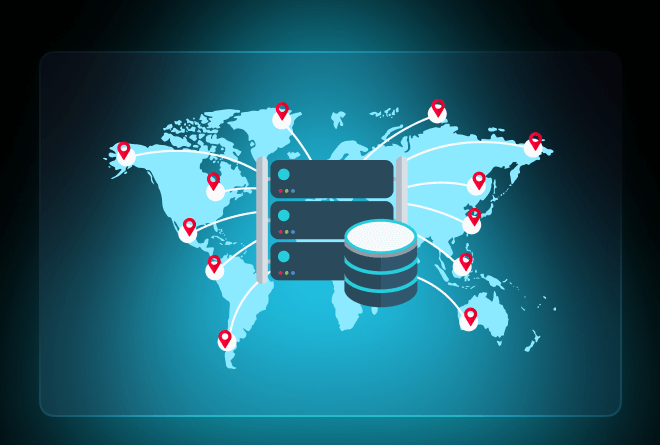Choosing the Right Server Location for Optimal Website Speed

Website speed has never been more important. Whether you’re running a blog, an eCommerce store, or a SaaS platform, your website’s loading time can directly impact user experience, search engine rankings, and even conversion rates. One of the most overlooked yet critical factors in optimizing speed is your server location—specifically, where your web host’s data center is physically located in relation to your visitors.
While caching, content delivery networks (CDNs), and code optimization all play significant roles in performance, none of them can fully compensate for a poor choice in server location. In this article, we’ll unpack how server location affects speed, what factors to consider when choosing a location, and how to make the best decision for your specific audience and business needs.
Why Server Location Matters
At a basic level, the internet is still bound by physical infrastructure. Every time a user visits your website, their browser sends a request to your server, retrieves data, and then renders it on their screen. The farther the server is from the user, the longer that round-trip communication takes—this is known as latency.
Imagine you’re based in New York and your site is hosted on a server in Sydney. Every single request must travel halfway around the world and back. While we’re only talking milliseconds here, the delay can become very noticeable when loading dozens of assets per page. Multiply that by hundreds or thousands of users, and you start to see the cost.
Google and other search engines consider page speed a ranking factor, particularly for mobile. Users are impatient—according to Google research, bounce rates increase by 32% when page load times go from 1 to 3 seconds. So yes, server location is a foundational performance factor that should not be ignored.
Server Location and Time to First Byte (TTFB)
A useful metric for measuring the impact of server location is Time to First Byte (TTFB). This measures the time it takes from the moment a browser makes a request until it receives the first byte of data from the server. TTFB is heavily influenced by the distance between server and user.
While other issues like backend processing or server load can also affect TTFB, geography remains a major contributor. If your site consistently shows slow TTFB scores in one region, it may be time to rethink your hosting location.
Tools like GTmetrix, Pingdom, and WebPageTest can help you analyze TTFB from multiple global test locations. If you notice strong performance in one area and poor performance elsewhere, server proximity is likely playing a role.
Key Factors to Consider When Choosing a Server Location
Choosing a server location isn’t about picking a random city. You need to be intentional and align your decision with your actual user base and performance goals. Here are the most important factors to consider:
1. Audience Geography
This is the most obvious yet most important factor. Where are your visitors located? If you’re running a local business in Chicago, there’s no reason to host your site in Europe. But if you’re running an international brand, things get more complex.
Use analytics tools (like Google Analytics or Cloudflare Web Analytics) to understand your visitor distribution. Once you know where your audience is coming from, you can host your server accordingly. If your audience is spread across multiple continents, consider hybrid solutions like CDNs or even multi-region hosting.
2. Content Type and Size
Heavier content—like high-resolution images, videos, or complex scripts—is more sensitive to latency. If your site serves a lot of large files or dynamic content, a local server will minimize the loading time significantly.
For media-heavy sites like online portfolios, news platforms, or eLearning portals, even a 100ms delay due to distance can add up quickly. For these scenarios, hosting closer to the user base becomes even more important.
3. Compliance and Data Privacy Regulations
Some industries—like healthcare, finance, or legal—have strict compliance requirements regarding data storage. For example, the European Union’s GDPR may require certain types of data to remain within EU borders. Similarly, Canada’s PIPEDA and Australia’s Privacy Act impose location-based obligations.
Before picking a server location, check whether your business is subject to data sovereignty laws. Hosting in the wrong jurisdiction could expose you to legal penalties.
4. CDN Usage
A Content Delivery Network (CDN) is a powerful tool that can mitigate some of the performance downsides of distant servers. A CDN caches your site’s static content—like images, CSS, and JS files—and serves it from a network of edge locations around the globe.
However, CDNs aren’t a complete solution. They typically only cache static files, not dynamic content like database-driven pages, login systems, or checkout processes. That means your main server location still matters, especially for content that can’t be cached.
5. Cost and Infrastructure
Sometimes, the best server location isn’t just about geography but also about infrastructure quality. Data centers in major cities like Amsterdam, Singapore, or Los Angeles tend to offer more robust networks, better redundancy, and stronger DDoS protection.
However, high-quality infrastructure can come at a premium. Some regions offer cheaper hosting but may lack the high-speed fiber connectivity or redundancy you need for consistent uptime. Always balance cost with performance.
Common Scenarios and Server Location Recommendations
To make this more practical, let’s look at a few common business scenarios and the server location strategies that make sense for each.
Scenario 1: A Local Small Business
If you run a small business serving customers in a specific metro area—like a bakery in Seattle or a law firm in Austin—choose a server in a nearby data center, ideally within the same state. This ensures fast loading times for local visitors, helps with SEO (search engines prefer local servers for local queries), and often improves reliability during local outages.
Scenario 2: A US-Based eCommerce Site with a Global Audience
Let’s say your eCommerce store is headquartered in the US but receives significant traffic from Europe and Asia. In this case, a US-based server combined with a reliable global CDN is usually the best solution. Keep your backend in the US but let the CDN handle static content delivery abroad.
You might also consider multi-region hosting or edge computing setups if dynamic performance for international users becomes a bottleneck.
Scenario 3: A SaaS App Targeting the European Market
If your SaaS platform is designed for European users, your primary server should be in the EU—Frankfurt, Amsterdam, or Paris are popular options. This not only minimizes latency but also keeps you in compliance with data regulations.
Even if your business is headquartered in the US, hosting in Europe for a European audience makes better technical and legal sense.
Scenario 4: A Blog with Mostly Mobile Traffic from Developing Countries
If you run a content-rich blog with a large mobile readership in countries like India, Brazil, or the Philippines, your server should ideally be located close to your largest audience cluster. Hosting in Singapore, for example, can be a smart move for Asian traffic.
Additionally, you’ll want a CDN with good edge coverage in those regions and strong mobile optimization practices.
How to Check and Monitor Server Performance by Location
Before finalizing your server location, and even after your site is live, use tools to simulate user experience from various parts of the world. These include:
- GTmetrix – Allows you to test performance from multiple geographic locations.
- Pingdom – Offers location-specific page speed insights.
- WebPageTest – One of the most comprehensive tools for testing speed across different browsers and countries.
- Cloudflare Analytics – If you use Cloudflare, their analytics can show you geographic load times and cache hit ratios.
Monitoring these tools regularly helps you stay ahead of performance drops, particularly if your audience shifts to new regions over time.
Final Tips for Optimizing Performance Across Locations
Once you’ve chosen the best server location for your current audience, here are a few bonus tips to maximize the benefits:
- Use a CDN: Even with a well-placed server, a CDN helps scale and optimize delivery, especially for static assets.
- Minify and Compress Assets: Smaller files load faster, regardless of geography.
- Enable Caching: Server-side and browser caching can greatly reduce load times for returning visitors.
- Monitor DNS Performance: DNS resolution can add delays—make sure your provider has fast, globally distributed resolvers.
- Plan for Growth: As your site scales, your audience might shift. Be ready to re-evaluate your server location in the future.
Choosing the right server location is more than just a technical checkbox—it’s a strategic decision that affects how users experience your brand. Whether you’re optimizing for milliseconds in New York or ensuring GDPR compliance in Berlin, aligning your hosting location with your audience’s needs sets the stage for faster, smoother, and more reliable digital experiences.



